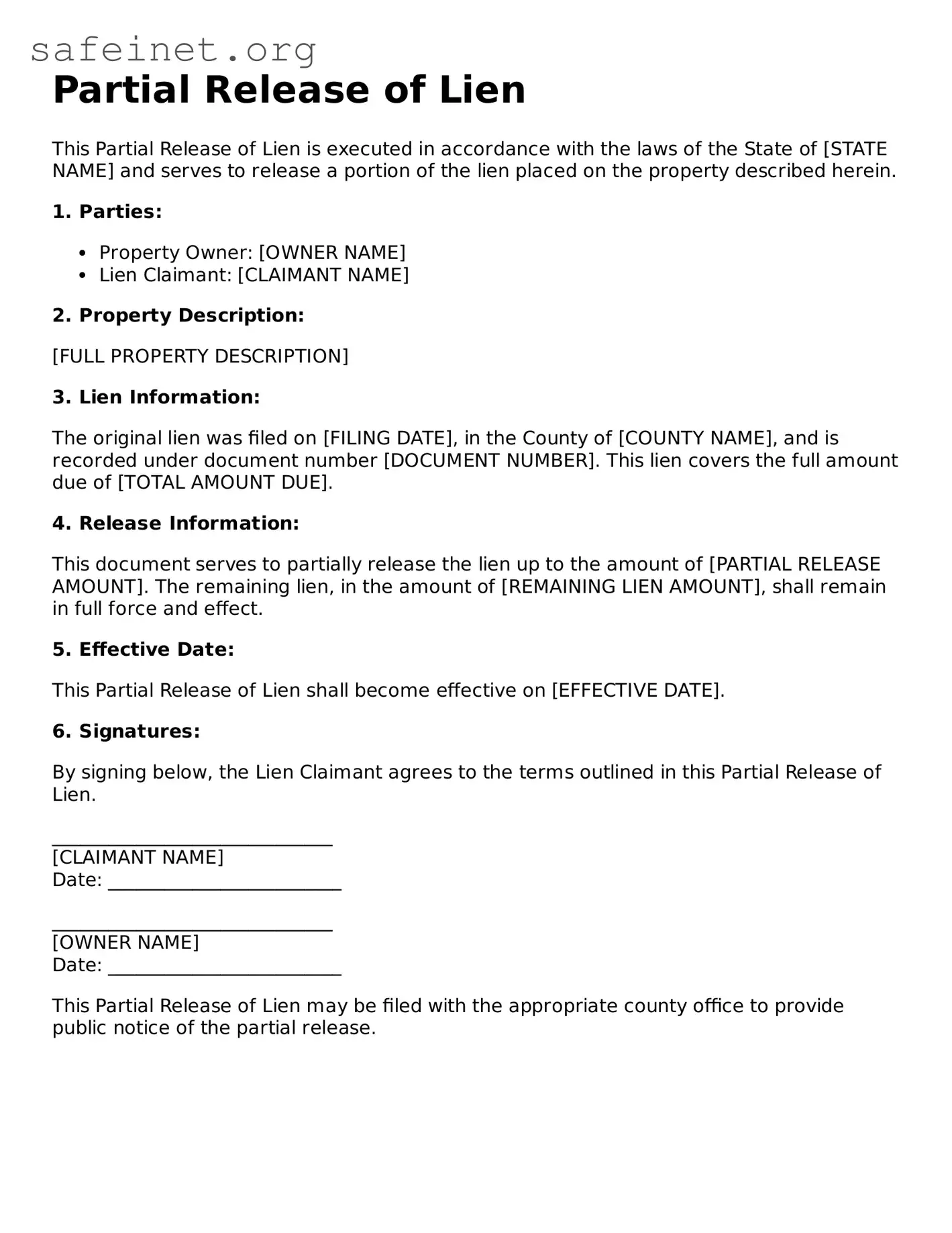What is a Partial Release of Lien form?
A Partial Release of Lien form is a legal document used to remove a lien from a specific portion of a property while keeping the lien intact for the remaining areas. This form allows property owners and contractors to settle debts for completed work on part of the property, ensuring that other areas can still be subject to the lien until all obligations are met.
Who typically uses a Partial Release of Lien form?
This form is commonly used by contractors, subcontractors, or suppliers who have placed a lien on a property for unpaid work or materials. Property owners can also utilize this form if they wish to pay off part of a debt, thereby allowing for the release of the lien on that section of the property.
When is a Partial Release of Lien necessary?
A Partial Release of Lien is necessary when work has been completed on a particular area of a property and payment has been made for that work. For example, if a contractor has finished work on a section of the property and the property owner pays for that work, a Partial Release of Lien can be issued to reflect the payment and release that portion from the lien.
How does one complete a Partial Release of Lien form?
To complete a Partial Release of Lien form, the lien claimant must fill out essential information, including the property address, the date, the specific portion of the lien being released, and the applicable signatures. It’s essential to ensure accuracy in all details, as errors could delay the release process or create complications.
Are there any fees associated with filing a Partial Release of Lien?
Yes, in most jurisdictions, there may be fees tied to the filing of a Partial Release of Lien. These fees will vary by location and can depend on the county or state. It is advisable to check with the local recording office or a legal professional to determine the exact fees and any additional requirements.
What happens after a Partial Release of Lien is filed?
Once the Partial Release of Lien is filed with the appropriate local office, the released portion of the lien becomes void, offering relief to that specific part of the property. A copy of the filed document should be retained by the property owner and the lien claimant as proof of the transaction.
Can a Partial Release of Lien be contested?
Yes, a partial release may be contested if there is a dispute regarding payment or the nature of the work completed. If a property owner believes that the release was improperly filed or does not reflect the actual agreement, they can dispute it legally, potentially requiring a resolution through negotiation or court involvement.
What are the legal implications of using a Partial Release of Lien?
The legal implications of utilizing a Partial Release of Lien are significant. By filing this document, the lien claimant confirms the receipt of payment for the work performed on the released section. However, any remaining debt associated with the unreleased portions of the property still exists and can be pursued through legal means. Both parties should fully understand their rights and obligations before proceeding.
Where can I obtain a Partial Release of Lien form?
A Partial Release of Lien form can usually be obtained from a local recording office, legal document preparation service, or through various online legal resources. Ensure that the form complies with the specific laws and regulations of the jurisdiction in which the property is located.
